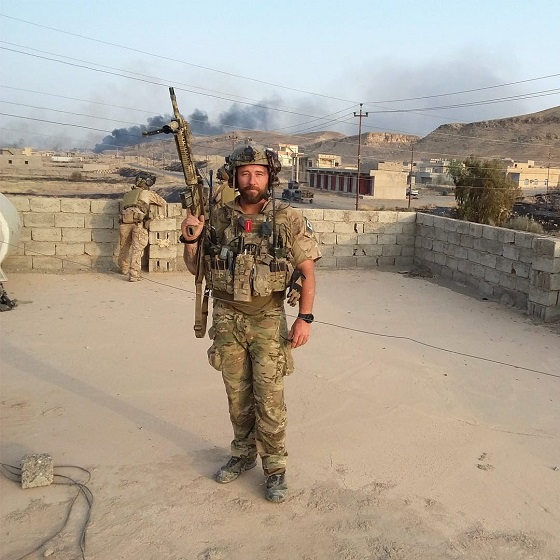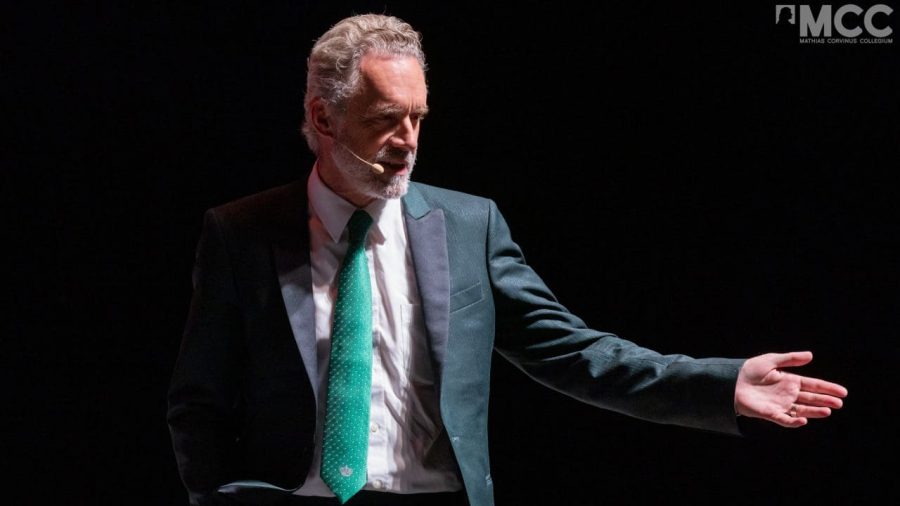Gerry Feehan
Angling and adventure greet our intrepid traveller on Padre Island

By Gerry Feehan, award-winning travel writer and photographer. Here is his latest story, Padre Island, Texas.
_________________________________________________________________________________________
“…I peaked through a stack of chili-flavoured pork rinds, past a battered flag of the Lone-Star State hanging in the dirty window, and into the parking lot. Smiley was staring storeward… waiting….”
Padre Island Texas is a long spit of sand dunes guarding mainland Texas from the destructive tornadoes and winter storms that pound in from the Gulf of Mexico. Between this narrow barrier island and the mainland lies Laguna Madre, a shallow hyper-saline sea renowned for sensitive sea grass and world-class fishing.

The end of the road on South Padre Island.
On some Padre Island beaches, camping is free. South of Corpus Christi, at Padre Island National Seashore, free boon-docking extends for over 100 kilometres. But the sandy entrance is also the only exit. So, after you bite off as much of the hard-packed seashore road as you can chew and you’ve had your fill of remote surf and turf, a tight U-turn and a long return drive up the beach is required to get back to civilization.
It was shoulder season, so we and our RV had the whole shoreline to ourselves.

Now that’s remote camping!
The other campers were all outfitted for fishing. “When in Rome,” thought I and asked the park ranger if he knew of any local fishing guides.
The weather was atrocious: 3°C with a 70-kilometer north wind. Only a Canuckle-head would beach in such conditions; five meters from the raging ocean and sideways to a Gulf gale. The van was a rockin’ all night.
In the morning the weather cleared, the sun shone and the wind ebbed, portending a fine day on the Laguna Madre. We drove back across the causeway to the mainland, toward Arroyo City and a lovely campground along a canal fronting the ocean. We chose a site protected by live oak trees in case (heaven forbid) the weatherman’s prognostication was inaccurate and the wind began to howl anew. As per our typical MO, we arrived at dusk, sans reservation.
The other campers were all outfitted for fishing. “When in Rome,” thought I and asked the park ranger if he knew of any local fishing guides.
“No, I sure don’t,” he said. “Y’all could check with the live-bait store back in town. Look for the big sign – a redfish – out front. They may have a’ idea.” I asked Florence if she’d mind hanging solo for a day while I went angling. “No, go ahead. I’ll spend the day relaxing, reading and knitting.” I wandered down the road. When I saw red, I stepped in. The shop smelt. After baiting the proprietor with fishing small-talk, I asked, “Do you think you could find a guide to take me out tomorrow?”
“Well, I know of a fella lives right by,” he said, chewing uncertainly on a pork rind, “but it’s kind of late and I doubt he’d be available on short notice. I could call if you like.” He picked up the phone.

Captain Smiley
Five minutes later ‘Captain Smiley’ was walking in the door. He shook my hand and arrangements were made to tackle an early morning. The sun had not yet risen when the Captain putt-putted up to our riverfront campsite and welcomed me aboard. Minutes later, dawn greeted us as we cast our first lines into the shallow, glassy waters of Laguna Madre. A fat red drum hit on my second cast; a fighting day was upon us.
I had a great time with Smiley. Affirming his moniker, he laughed and joked all day long in his charismatic Tex-Mex accent.
The night before I had warned the Captain that I was short on greenbacks and would need to pay by cheque. He hesitantly agreed. When we arrived back at dock he expertly prepped my red-fish “on the half-shell” for grilling. Driving me back to our campsite he diverted his battered pick-up truck toward the bait shop. Pulling up he informed me that there was an ATM inside. Evidently he preferred cash to a cheque written on the reputable but foreign Royal Bank of Canada. I smiled, opened the door and headed into the store. 
I had no bank card, just a US Visa. Uncertain if I could withdraw cash or whether my PIN# would work, I shoved the card in, chose English over Spanish as my language of preference and, after agreeing to an unreasonable fee for using the bank machine (“in addition to whatever other charges your financial institution may impose”). I prayed silently as I entered my personal security particulars. The machine sat quietly for a time, made some distant interior rumblings and eventually announced: “Request Declined.”

Roseate spoonbill
I peaked through a stack of chili-flavoured pork rinds, past a battered flag of the Lone-Star State hanging in the dirty window, and into the parking lot. Smiley was staring storeward… waiting.
I checked to see if there was a back exit. The wary owner eyed me suspiciously. The rear door led through a heap of fish offal into an alligator-infested swamp. Preferring embarrassment to an awful death, I thought I’d again ask the Captain if he would accept my cheque. I took a last baleful glance at the ATM and noticed a message: “maximum withdrawal $120.” I had requested too much dinero. I started the process anew, punched in my PIN, agreed to pay the usurious fees and crossed my fingers. The machine slowly spat six tattered twenties at me. A full day of guided fishing is not cheap. I repeated the process a few times. Eventually the tired machine coughed up enough cash to retire my piscatorial indebtedness.
I handed the dough to Smiley. He smiled and asked, “Do you want to fish tomorrow?” I couldn’t envisage enduring another ATM debacle and, in any event, it was time for us to move on from this arroyo.
“No thanks,” I said, “we need to hit the road tomorrow.”
“Aw, that’s too bad,” said Smiley. “Tomorrow’s my day off and what I do on my day off is… go fishing. I’ll take you out on my dime.”

A great blue heron eyes the fishing.
I saw my calendar clearing.
I called Florence to ask leave. She concurred, delighted. (Apparently, one day away from her beloved was insufficient to create any overwhelming desire to be reunited in the confines of our small RV.)
I had another great “caught my limit” day of fishing. As I fried up a delicious speckled sea trout that night, Florence asked, “Are you going fishing again tomorrow?”
“Naw,” I said. “Smiley’s got a customer lined up for the morning.”
“Gee, that’s too bad,” she said, “this fish is incredible.” She was eyeing her knitting.
______________________________________________________________________________________________

Gerry Feehan
Hope you enjoyed your trip to Padre Island Texas. Gerry Feehan is an award-winning travel writer and photographer. He and his wife Florence live in Red Deer, AB and Kimberley, BC. You can read more of his stories here.
Thanks to these great local sponsors for making this feature possible!
Read Gerry’s excellent tale – The Long Road to Texas. Click below.
Gerry Feehan
Abu Simbel
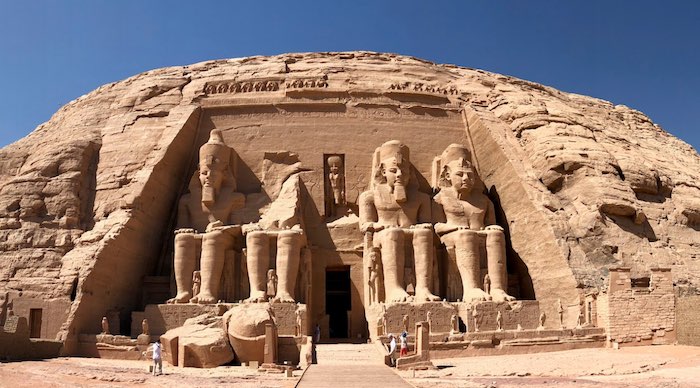
Abu Simbel is a marvel of ancient and modern engineering
I love looking out the window of an airplane at the earth far below, seeing where coast meets water or observing the eroded remains of some ancient formation in the changing light. Alas, the grimy desert sand hadn’t been cleaned from the windows of our EgyptAir jet, so we couldn’t see a thing as we flew over Lake Nasser en route to Abu Simbel. I was hopeful that this lack of attention to detail would not extend to other minor maintenance items, such as ensuring the cabin was pressurized or the fuel tank full.
We had just spent a week on a dahabiya sailboat cruising the Nile River, and after disembarking at Aswan, were headed further south to see one of Egypt’s great
monuments. There are a couple of ways to get to Abu Simbel from Aswan. You can ride a bus for 4 hours through the scorched Sahara Desert, or you can take a plane for the short 45-minute flight.
Opaque windows notwithstanding, I was glad we had chosen travel by air. Abu Simbel is spectacular, but there’s really not much to see except the monument itself and a small adjacent museum. So most tourists, us included, make the return trip in a day. And fortunately we had Sayed Mansour, an Egyptologist, on board. Sayed was there to explain all and clear our pained expressions.
Although it was early November, the intense Nubian sun was almost directly overhead, so Sayed led us to a quiet, shady spot where he began our introduction to
Egyptian history. Abu Simbel is a marvel of engineering — both modern and ancient. The temples were constructed during the reign of Ramses II. Carved from solid rock in a sandstone cliff overlooking the mighty river, these massive twin temples stood sentinel at a menacing bend in the Nile — and served as an intimidating obstacle to would-be invaders — for over 3000 years. But eventually Abu Simbel fell into disuse and succumbed to the inevitable, unrelenting Sahara. The site was nearly swallowed by sand when it was “rediscovered” by European adventurers in the early 19 th century. After years of excavation and restoration, the monuments resumed their original glory.
Then, in the 1960’s, Egyptian president Abdel Nasser decided to construct a new “High Dam” at Aswan. Doing so would create the largest man-made lake in the
world, 5250 sq km of backed-up Nile River. This ambitious project would bring economic benefit to parched Egypt, control the unpredictable annual Nile flood and also supply hydroelectric power to a poor, under-developed country. With the dam, the lights would go on in most Egyptian villages for the first time. But there were also a couple of drawbacks, which were conveniently swept under the water carpet by the government. The new reservoir would displace the local Nubian population whose forbearers had farmed the fertile banks of the Nile River for millennia. And many of Egypt’s greatest monuments and tombs would be forever submerged beneath the deep new basin — Abu Simbel included. But the government proceeded with the dam, monuments be damned.
Only after the water began to rise did an international team of archaeologists, scientists — and an army of labourers — begin the process of preserving these
colossal wonders. In an urgent race against the rising tide, the temples of Abu Simbel were surgically sliced into gigantic pieces, transported up the bank to safety and reassembled. The process was remarkable, a feat of engineering genius. And today the twin edifices, honouring Ramses and his wife Nefertari remain, gigantic, imperious and intact. But instead of overlooking a daunting corner of the Nile, this UNESCO World Heritage site now stands guard over a vast shimmering lake.
Sayed led us into the courtyard from our shady refuge and pointed to the four giant Colossi that decorate the exterior façade of the main temple. These statues of
Ramses were sculpted directly from Nile bedrock and sat stonily observing the river for 33 centuries. It was brutally hot under the direct sun. I was grateful for the new hat I had just acquired from a gullible street merchant. Poor fellow didn’t know what hit him. He started out demanding $40, but after a prolonged and brilliant negotiating session, I closed the deal for a trifling $36. It was difficult to hold back a grin as I sauntered away sporting my new fedora — although the thing did fall apart a couple of days later.
Sayed walked us toward the sacred heart of the shrine and lowered his voice. Like all Egyptians, Sayed’s native tongue is Arabic. But, oddly, his otherwise perfect English betrayed a slight cockney accent. (Sayed later disclosed that he had spent a couple of years working in an East London parts factory.) He showed us how the great hypostyle hall of the temple’s interior is supported by eight enormous pillars honouring Osiris, god of the underworld.

Exploring the inner temple

Nefertari
Sayed then left us to our devices. There were no other tourists. We had this incredible place to ourselves. In the dim light, we scampered amongst the sculptures
and sarcophagi, wandering, hiding and giggling as we explored the interior and its side chambers. At the far end lay the “the holiest of holies” a room whose walls were adorned with ornate carvings honouring the great Pharaoh’s victories — and offering tribute to the gods that made Ramses’ triumphs possible.
Exterior photographs of Abu Simbel are permitted, but pictures from within the sanctuary are verboten — a rule strictly enforced by the vigilant temple guardians — unless you offer a little baksheesh… in which case you can snap away to your heart’s content. Palms suitably greased, the caretakers are happy to pose with you in front of a hidden hieroglyph or a forbidden frieze, notwithstanding the stern glare of Ramses looking down from above.

A little baksheesh is key to holding the key
After our brief few hours at Abu Simbel, we hopped back on the plane. The panes weren’t any clearer but, acknowledging that there really wasn’t much to see in the Sahara — and that dirty airplane windows are not really a bona fide safety concern — I took time on the short flight to relax and bone up on Ramses the Great, whose mummified body awaited us at the Egyptian Museum in Cairo.
Exodus Travel skilfully handled every detail of our Egypt adventure: www.exodustravels.com/
Gerry Feehan is an award-winning travel writer and photographer. He lives in Kimberley, BC.

Thanks to Kennedy Wealth Management for sponsoring this series. Click on the ads and learn more about this long-term local business.
Gerry Feehan
Cairo – Al-Qahirah
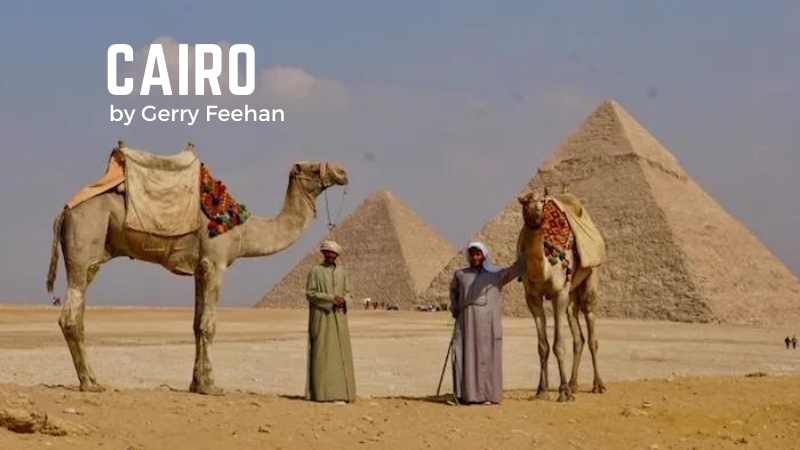
The Pyramids of Giza
The first thing one notices upon arrival in Egypt is the intense level of security. I was screened once, scanned twice and patted down thrice between the time we landed at the airport and when we finally stepped out into the muggy Cairo evening. At our hotel the scrutiny continued with one last investigation of our luggage in the lobby. Although Egyptian security is abundant in quantity, the quality is questionable. The airport x-ray fellow, examining the egg shaker in my ukulele case, sternly demanded, “This, this, open this.” When I innocently shook the little plastic thing to demonstrate its impermeability he recoiled in horror, but then observed it with fascination and called over his supervisor. Thus began an animated, impromptu percussion session. As for the ukulele, it was confiscated at hotel check-in and imprisoned in the coat check for the duration of our Cairo stay. The reasons proffered for the seizure of this innocuous little instrument ranged from “safety purposes” to “forbidden entertainment”. When, after a very long day, we finally collapsed exhausted into bed, I was shaken — but did not stir.
Al-Qahirah has 20 million inhabitants, all squeezed into a thin green strip along the Nile River. Fading infrastructure and an exponential growth in vehicles have contributed to its well-deserved reputation as one of the world’s most traffic-congested cities. The 20km trip from our hotel in the city center, to the Great Pyramid of Cheops at Giza across the river, took nearly two hours. The driver smiled, “Very good, not rush hour.”
Our entrance fee for the Giza site was prepaid but we elected to fork out the extra Egyptian pounds to gain access to the interior of the Great Pyramid. Despite the up-charge — and the narrow, dark, claustrophobic climb – the reward, standing in Cheop’s eternal resting place, a crypt hidden deep inside the pyramid, was well worth it. We also chose to stay after sunset, dine al fresco in the warm Egyptian evening, and watch the celebrated ‘sound and light’ performance. The show was good. The food was marginal. Our waiter’s name was Fahid. Like many devout Muslim men, he sported a zabiba, or prayer bump, a callus developed on the forehead from years of prostration. Unfortunately throughout the event Fahid hovered over us, attentive to the point of irritation, blocking our view of the spectacle while constantly snapping fingers at his nervous underlings. The ‘son et lumière’ show was a little corny, but it’s pretty cool to see a trio of 4500-year-old pyramids – and the adjoining Great Sphinx — illuminated by 21 st century technology.

The Great Sphinx

Giza at nightThe next night our group of six Canucks attended an Egyptian cooking class. Our ebullient hostess was Anhar, (‘the River’ in Arabic). Encouraged by her contagious enthusiasm, we whipped up a nice tabouli salad, spicy chicken orzo soup and eggplant moussaka. We finished up with homemade baklava. Throughout the evening, Anhar quizzed us about the ingredients, the herbs and spices, their origins and proper method of preparation. Anyone who answered correctly was rewarded with her approving nod and a polite clap. Soon a contest ensued. Incorrect answers resulted in a loud communal ‘bzzzt’ — like the sound ending a hockey game. It’s not polite to blow one’s own horn, but the Feehan contingent acquitted themselves quite nicely. If I still had her email, Anhar could confirm this.
Cairo was not the highlight of our three-week Egyptian holiday, but a visit to the capital is mandatory. First there’s the incredible Pyramids. But as well there’s the Egyptian Museum that houses the world’s largest collection of Pharaonic antiquities including the golden finery of King Tutankhamen and the mummified remains of Ramses the Great. Ramses’ hair is rust coloured and thinning a little, but overall he looks pretty good for a guy entering his 34 th century.

Ramses the Great

Then there’s Khan el-Khalili, the old souk or Islamic bazaar. We strolled its ancient streets and narrow meandering alleyways, continually set upon by indefatigable street hawkers. “La shukraan, no thanks,” we repeated ineffectually a thousand times. The souk’s cafes were jammed. A soccer match was on. The ‘beautiful game’ is huge in Egypt. Men and women sat, eyes glued to the screen, sipping tea and inhaling hubbly bubbly.

The Old Souk Bazaar

Selfies, Souk style
An aside. When traveling in Egypt, be sure to carry some loose change for the hammam (el baño for those of you who’ve been to Mexico). At every hotel, restaurant, museum and temple — even at the humblest rural commode — an attendant vigilantly guards the lavatory. And have small bills for the requisite baksheesh. You’re not getting change.
After our evening in the souk we had an early call. Our guide Sayed Mansour met us at 6am in the hotel lobby. “Yella, yella. Hurry, let’s go,” he said. “Ana mish bahasir – I’m not joking.” “Afwan,” we said. “No problem,” and jumped into the van. As we pulled away from the curb Sayed began the day’s tutorial, reciting a poem by Percy Blythe Shelly:
I met a traveller from an antique land,
Who said—“Two vast and trunkless legs of stone
Stand in the desert. . . . My name is Ozymandias, King of Kings;
Look on my Works, ye Mighty, and despair!”
And we were off, through the desert, to Alexandria. Founded by Alexander the Great in 332 BC, Egypt’s ancient capital was built on the Nile delta, where the world’s longest river meets the Mediterranean Sea. The day was a bit of a bust. The city was once renowned for its magnificent library and the famed Lighthouse of Alexandria. But the former burnt down shortly after Christ was born and the latter — one of the original seven wonders of the ancient world – toppled into the sea a thousand years ago. Absent some interesting architecture, a nice view of the sea from the Citadel — and Sayed’s entertaining commentary — Alexandria wasn’t really worth the long day trip. Besides, we needed to get back to Cairo and pack our swimwear. Sharm el Sheikh and the warm waters of the Red Sea were next up on the Egyptian agenda.

Gerry with some Egyptian admirers
Exodus Travel skilfully handled every detail of our trip: www.exodustravels.com And, if you’re thinking of visiting Egypt, I can suggest a nice itinerary. No sense reinventing the pyramid: [email protected]
Gerry Feehan is an award-winning travel writer and photographer. He lives in Kimberley, BC.

Thanks to Kennedy Wealth Management for sponsoring this series. Click on the ads and learn more about this long-term local business.
-

 Business1 day ago
Business1 day agoCarbon tax bureaucracy costs taxpayers $800 million
-

 Brownstone Institute1 day ago
Brownstone Institute1 day agoThe Most Devastating Report So Far
-

 ESG21 hours ago
ESG21 hours agoCan’t afford Rent? Groceries for your kids? Trudeau says suck it up and pay the tax!
-

 Daily Caller20 hours ago
Daily Caller20 hours agoLos Angeles Passes ‘Sanctuary City’ Ordinance In Wake Of Trump’s Deportation Plan
-

 COVID-191 day ago
COVID-191 day agoDr. McCullough praises RFK Jr., urges him to pull COVID shots from the market
-

 John Stossel19 hours ago
John Stossel19 hours agoGreen Energy Needs Minerals, Yet America Blocks New Mines
-
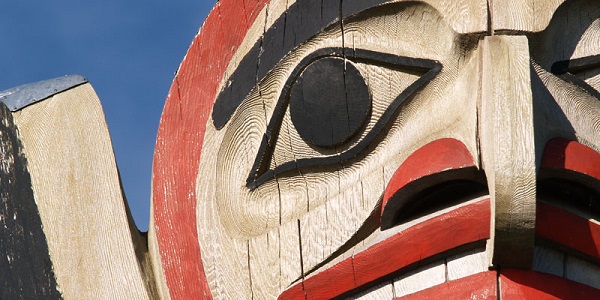
 Business2 days ago
Business2 days agoOttawa’s avalanche of spending hasn’t helped First Nations
-

 MAiD1 day ago
MAiD1 day agoOver 40% of people euthanized in Ontario lived in poorest parts of the province: government data




